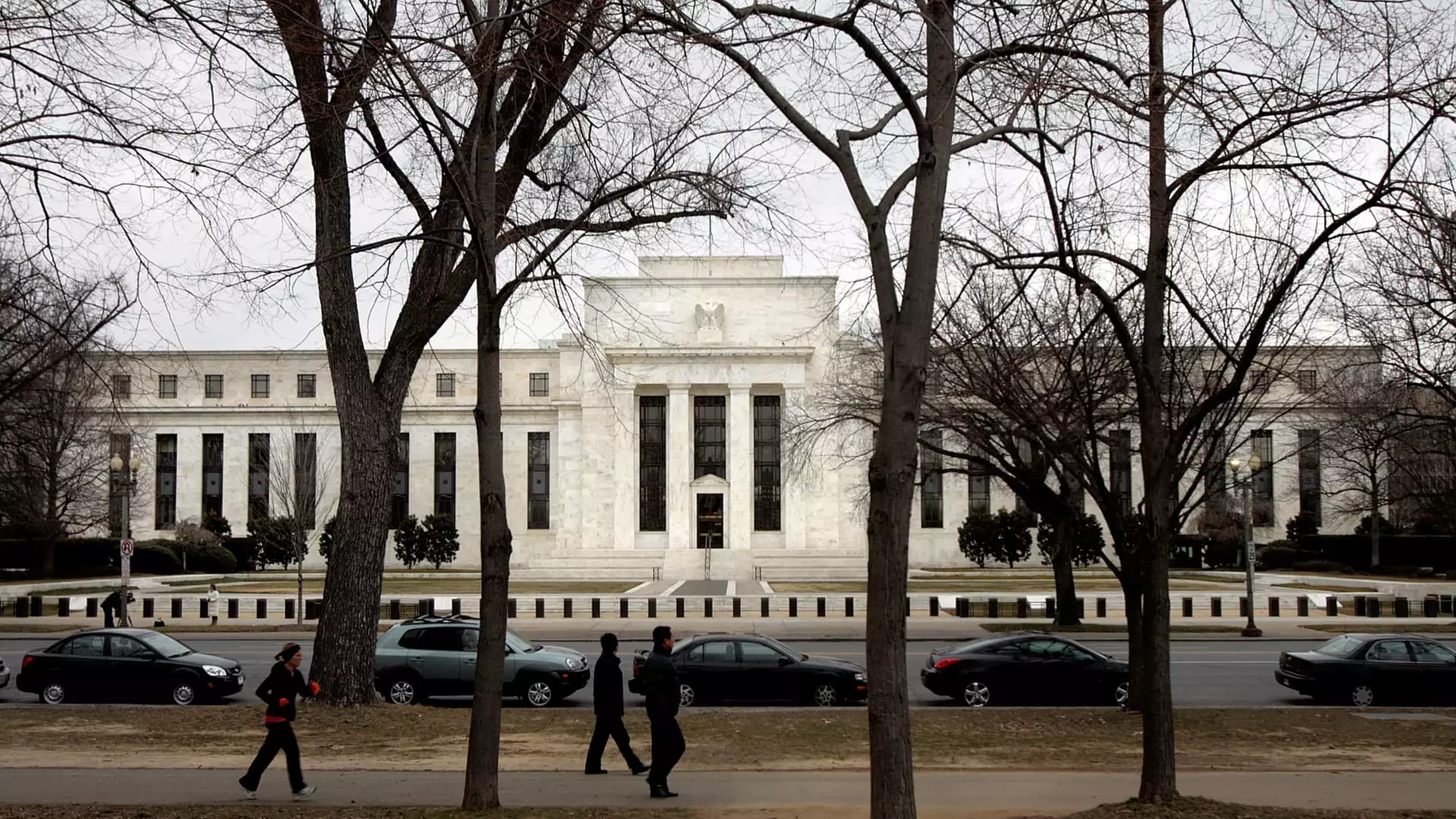The decision by the Federal Reserve to maintain interest rates in the face of persisting inflation has caused a stir in economic circles, prompting discussions among financial analysts, consumers, and policymakers. While the Fed intervened last year by dramatically cutting rates by a full percentage point, the latest stance reflects a cautious approach amid lingering economic pressures. With inflation continuing to surpass the Fed’s 2% target, the implications of these decisions echo far beyond boardroom meetings into the wallets of everyday Americans.
The Federal Reserve’s recent announcement to keep interest rates unchanged signals an ongoing struggle against inflation. Inflation levels, having spiraled to heights not witnessed since the early 1980s, have prompted concerns about economic stability and consumer wellbeing. The central bank’s prior strategy of implementing successive interest rate hikes has made borrowing increasingly expensive, which in turn raises critical questions about consumer credit, mortgage affordability, and the overall state of the economy. Despite two expected rate cuts within the year, the consensus is that these may be insufficient to yield substantial relief for consumers grappling with rising costs.
Michele Raneri, a finance expert with TransUnion, emphasizes that although inflation concerns may have slightly lessened, they remain prominent enough to suggest fewer potential rate cuts than initially forecasted. Indeed, this cautious approach reflects broader economic uncertainties, particularly as the domestic and global landscapes evolve in the wake of recent political shifts.
Former President Donald Trump’s recent commentary upon returning to office, expressing an explicit demand for immediate interest rate reductions, injects a political dimension into the Fed’s decisions. The delicate independence of the Federal Reserve may be further tested as political leaders have historically sought to influence monetary policy to align with fiscal goals. The intertwining of political strategy and economic policy underscores an important narrative: The central bank operates under the scrutiny of public opinion and political figureheads, which can shape its actions and public perception.
As inflation remains an important topic for voters, the intertwining of the economy and upcoming elections will likely keep the Federal Reserve’s actions in the spotlight. Consumers, wary of the interplay between politics and economic stability, find themselves at a precarious juncture where higher interest rates might threaten both expenditures and disposable income.
With the central bank keeping rates steady, the impact is immediate for consumers across several economic fronts. The Federal Reserve’s actions, though somewhat indirect, heavily influence the rates consumers face, particularly concerning credit cards, mortgages, auto loans, and student loans. The current average credit card interest rate stands at over 20%, a stark increase from levels observed prior to the rate hike cycle. For those encumbered by high levels of debt, hopes for rapid rate cuts may be dashed, as financial analysts, like Greg McBride of Bankrate, posit that meaningful relief is unlikely anytime soon.
Further complicating matters, the housing market, also sensitive to interest rate fluctuations, has seen mortgage costs reach historic heights. As prospective homebuyers grapple with an average 30-year mortgage rate perched above 7%, purchasing power continues to dwindle. The repercussions of sustained high rates ripple through the housing sector, impacting both buyers and sellers and contributing to overall market stagnation.
Similarly, auto loans are feeling the pressure. A combination of rising car prices and elevated interest rates has driven the cost of borrowing to new heights. Joseph Yoon from Edmunds highlights that sustained challenges in vehicle affordability are likely to persist, leaving many potential buyers feeling marginalized in a tightening market.
Surprisingly, while borrowers may struggle under the consequence of high rates, there is a silver lining for savers. Recent years have yielded the highest interest returns on savings in a decade, as top-yielding online savings accounts now offer nearly 5%. Such developments offer a promising avenue for those looking to secure their funds amidst economic uncertainties.
As the Federal Reserve contemplates further adjustments, the juxtaposition between the challenges faced by borrowers and the opportunities presented to savers creates a complex landscape for American consumers. For those grappling with debt, financial strategies such as balancing transfers or consolidating loans may be vital.
Looking ahead, expectations for economic stability hinge on myriad factors including inflation rates, consumer demand, and global economic conditions. As the Federal Reserve signals a gradual approach to future rate cuts, the primary focus will remain on consumer behavior under financial pressure. The decisions made by the Federal Reserve in the coming year will potentially shape the financial landscape, influencing everything from loan affordability to overall economic growth.
The Federal Reserve’s current rate strategy indicates both caution and complexity in addressing inflation while managing consumer needs. Understanding these dynamics will be essential for consumers maneuvering through a financial environment fraught with uncertainty and opportunity alike.

